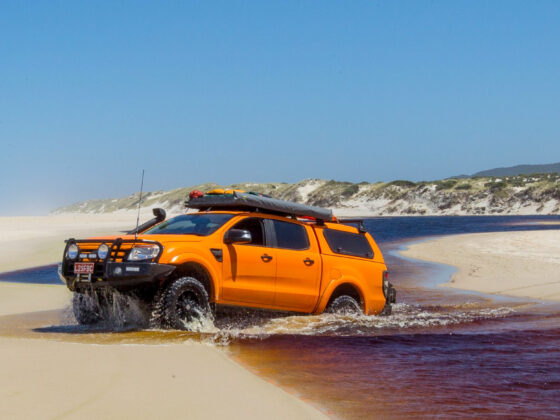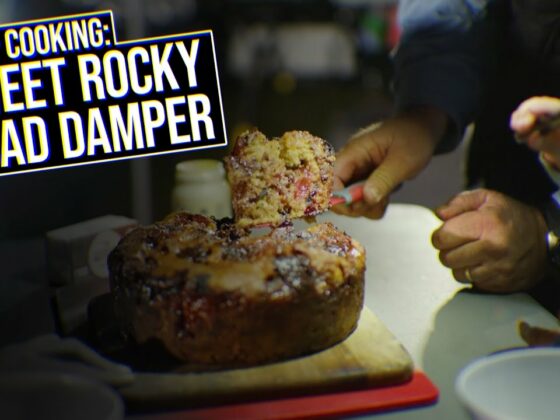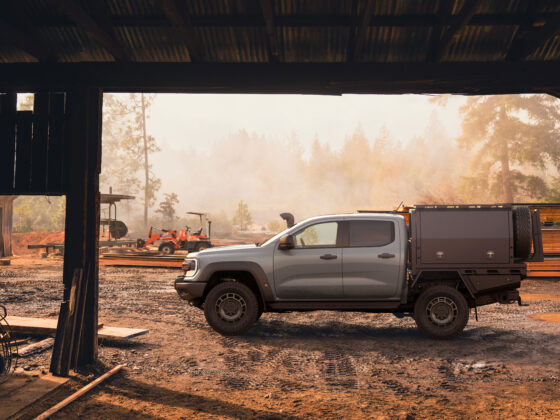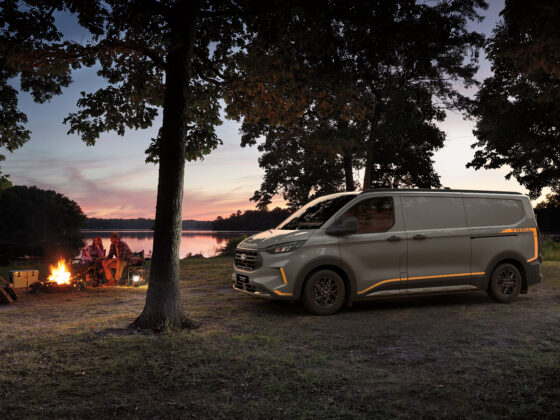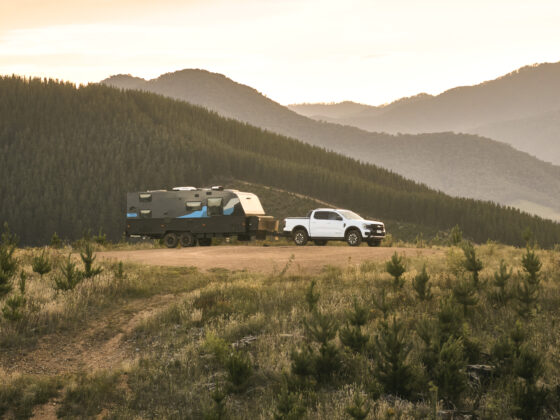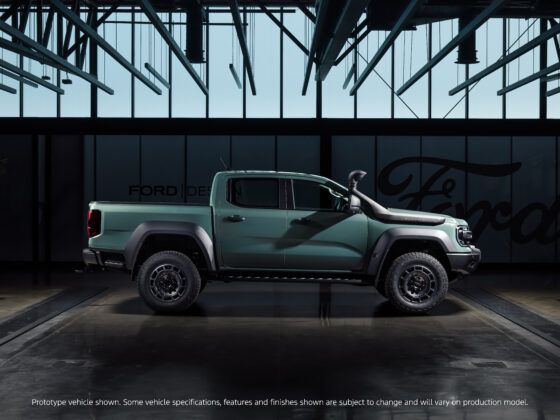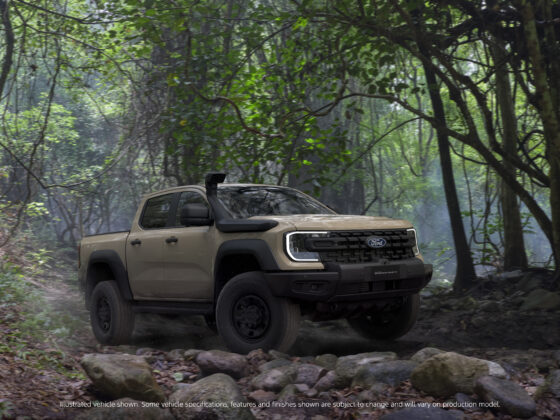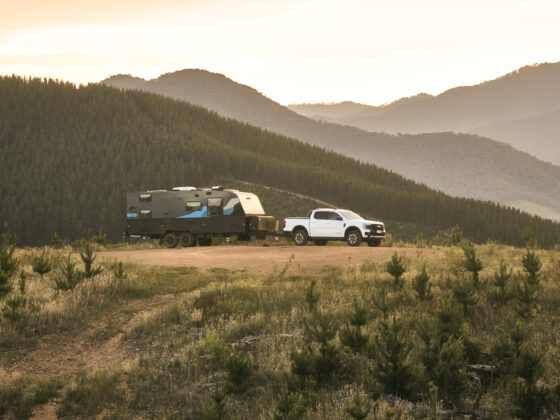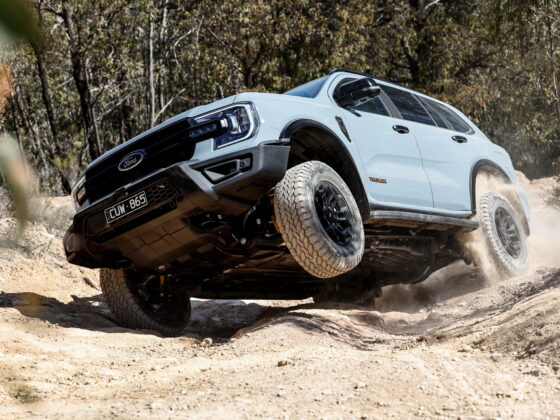Recently, I managed to drive an Australian-delivered Ford F-150 for the very first time. In this article, I’ll let you know my first impressions, what it’s like to drive, and what it took to finally land on our shores. And that last point just might surprise you. I can guarantee it’s more involved than you might think.
WHAT HAS LANDED
The F-150 sells over half a million vehicles each year in its home country. So it makes sense that it comes in various different specifications, from the petrol hybrid combo to the fully electric Lightning, to two petrol-powered variants. There’s the 3.5-litre twin turbo EcoBoost petrol engine, a V8 petrol, and another V6 petrol.
For the Aussie market, we get just one engine choice, and that’s the 3.5-litre twin turbo EcoBoost developing 298kW and 678Nm. It’s a formidable engine statistically, but even better in the flesh. Matched to a 10-speed auto and with the engine note piped through the B&O speakers, it’s an exhilarating donk indeed.
You might be wondering why Ford didn’t choose the V8, and that’s a damn good question. Particularly given the competitors favour the bent eight configuration.
Well, while the Ford V8 engine note might be more impressive, the Coyote V8 engine offers less torque than the six-cylinder, running a 153Nm deficit to the six-pot. And for a vehicle that’s destined to tow, and tow heavy things, that’s significant. Not to mention a V6 engine with two turbo’s is always going to be more efficient than a V8.
Ford Australia are offering the F-150 in two specifications – the up-spec Lariat, and the base model XLT. Prices will vary depending on your location, but in my neck of the woods, an XLT is $117,016, and the Lariat is $151,006. Add $995 for the long wheelbase variants.
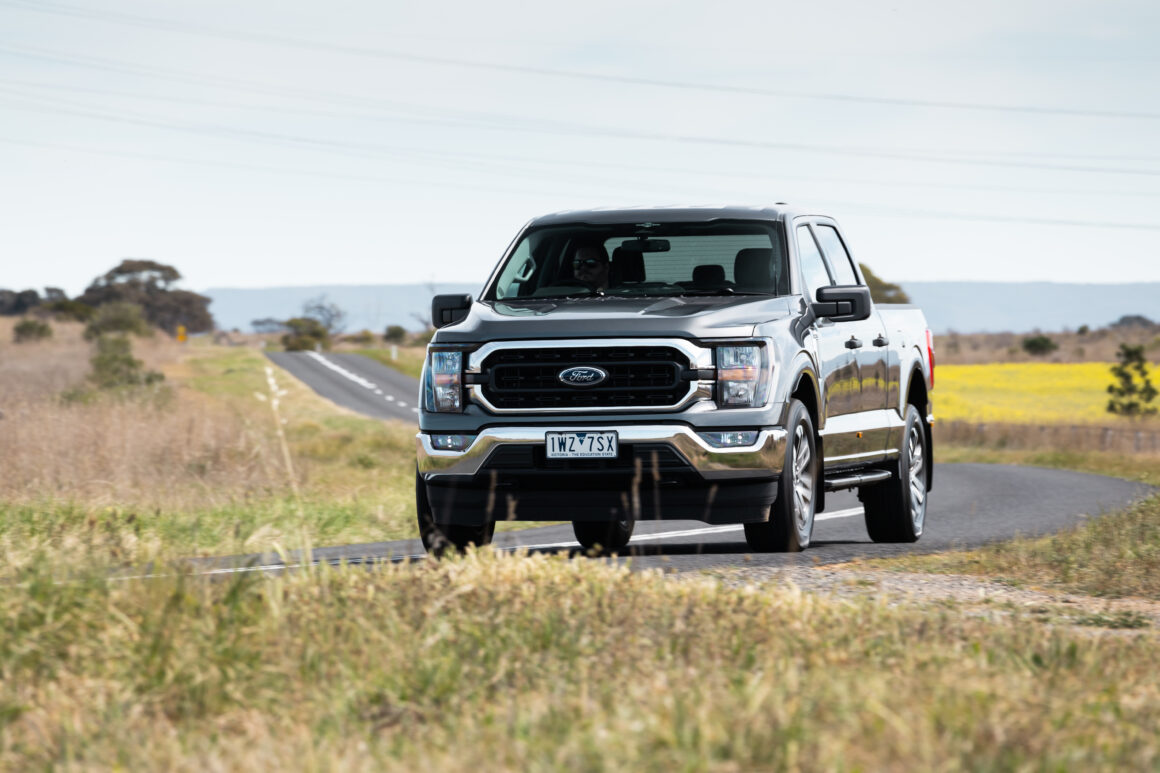
FIRST IMPRESSIONS
In the flesh, the F-150 has the stance of a dual cab limousine. A smart nose and boxy back end are what we’re used to, but that low front skirt will need some trimming before you go bush. But that would be easily remedied with a bullbar mounted up front. As for those front C-clamp headlights, a trademark of all F-Series models, it might surprise you that the design of those originated right here in Australia. When Ford America were designing the new look of the F-Series that we see today, designs of the Aussie-engineered Ranger and Everest landed on their desk. They liked the look so much, that they copied it. Cheekily, they released the C-Clamp headlamp and the F-Series look well prior to the Everest and Ranger. Regardless of who designed it, thankfully they look damn fine.
WEIGHT, WHAT?
In 2015, Ford made the remarkable decision to rip hundreds of kilograms of weight out of the F-150. They removed the steel panels in favour of lightweight aluminium – a costly exercise indeed. And that aluminium isn’t welded at all – it’s bonded and riveted. They made other improvements too, including the use of a featherweight cross-brace, made of magnesium. This super-strong part sits behind the dashboard and offers lateral strength and crashworthy characteristics. I’ve picked up the part itself, and you can easily hold it with one hand.
What makes both the use of expensive magnesium and aluminium parts impressive, is the fact that neither are cheap. And for a car that powers mainstream America, the decision to put engineering and weight over price has to be admired. Only a handful of luxury cars on the market even bother with a magnesium cross-brace, so to do it with a top-selling ute is surprising.
The chassis remains steel box section for strength, and the Australian-delivered models benefit from a slightly thicker chassis from the rear of the cab back. So with all of those weight-saving initiatives, do they pay off? Indeed they do. The F-150 in some specifications is 100kg lighter than its little brother the Ranger Raptor. Quite incredible, when you think about how much wider, longer and bigger-engined the F-150 is.
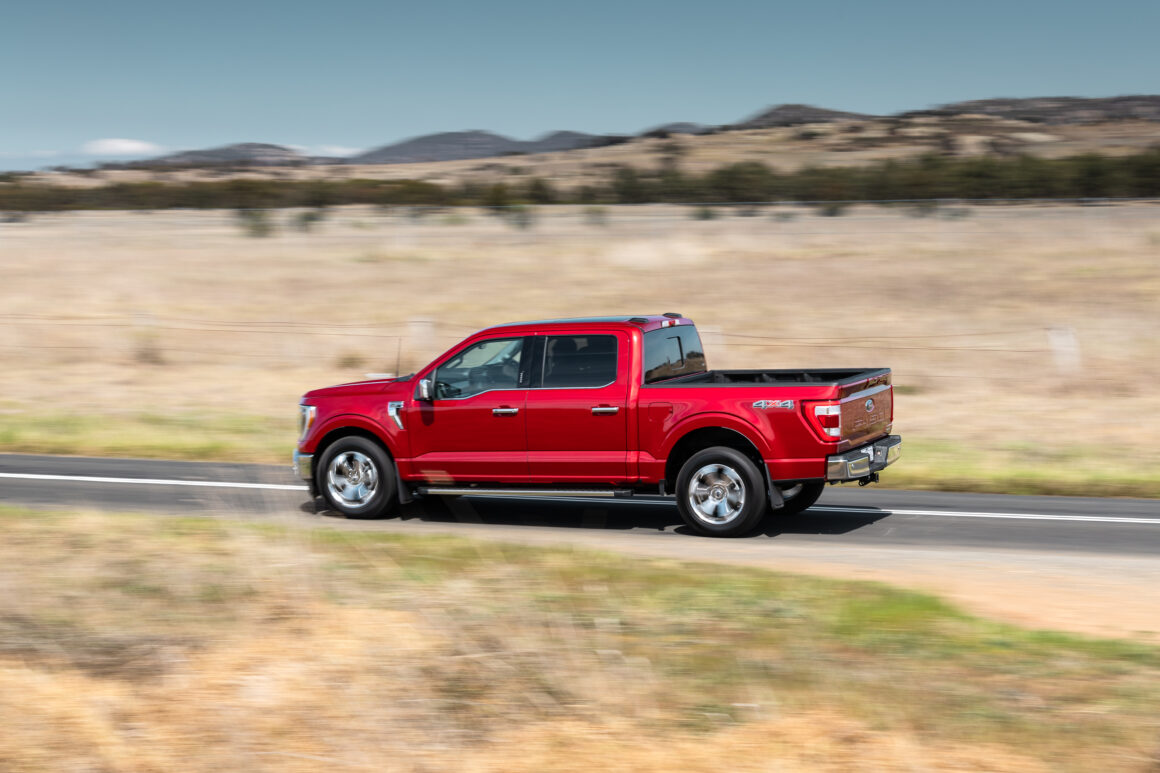
THE DRIVE
The moment you take your first corner in the F-150, your brain does a double-take. The steering is sharp, direct and instant. I’ve owned three US-import 4X4s, and none of them steered anywhere like this. It’s car-like, and confidence-inspiring. That steering feel comes compliments of a steering rack that’s borrowed from the Ranger Raptor, and that weight loss programme. Combine the two with some bang-on steering geometry, and it’s a standout performer. I struggle to think of a better steering 4X4. I might be labouring on this point but I believe credit where it’s due. When you’re shifting from left hook to right-hand drive, so many things can go wrong. It’s a complex beast, but Ford hasn’t cut corners, and that has paid off.
In terms of power, the V6 engine is remarkable. Pop her in Sports Mode, and the big rig lurches forward as if it’s got a firecracker up its tailpipe. The ride is really well tuned, and over lumpy Victorian backroads, it was really hard to unsettle.
A vehicle like this is really built to tow, but a petrol engine – seriously? I know what you’re thinking. I’ve towed plenty before with petrol V8s, and have the credit card scars to prove it. But, and I’ve no idea how they’ve done it, this thing tows like a dream. Powerful, stable – and wait for it – fuel efficient! A lot of the credit I’m sure goes to the ten-speed transmission, which always seems to be in the right part of the torque band. But the engine itself is really special. It lacks the turbo lag of a diesel, but still manages to garner diesel efficiency, or better.
I towed with a 3.5-tonne dual axle caravan on the back and was averaging 15 litres per 100km. With nothing on the back, 10 litres per 100km. And I wasn’t driving for efficiency either. All of this wasn’t completely surprising to me, because last year we blasted around the Bilbunya sand dunes in both a petrol 3.0 V6 Ranger Raptor and my turbo diesel 3.0 V6 diesel Ranger. The petrol-powered Ranger, used slightly less fuel than the diesel! It was an unfair comparison, given the Raptor was unmodified, while the diesel was fully modified, but it still showed me just how far petrol engines have come. The F-150 V6 is from the same family of engines, so shares that same efficiency.
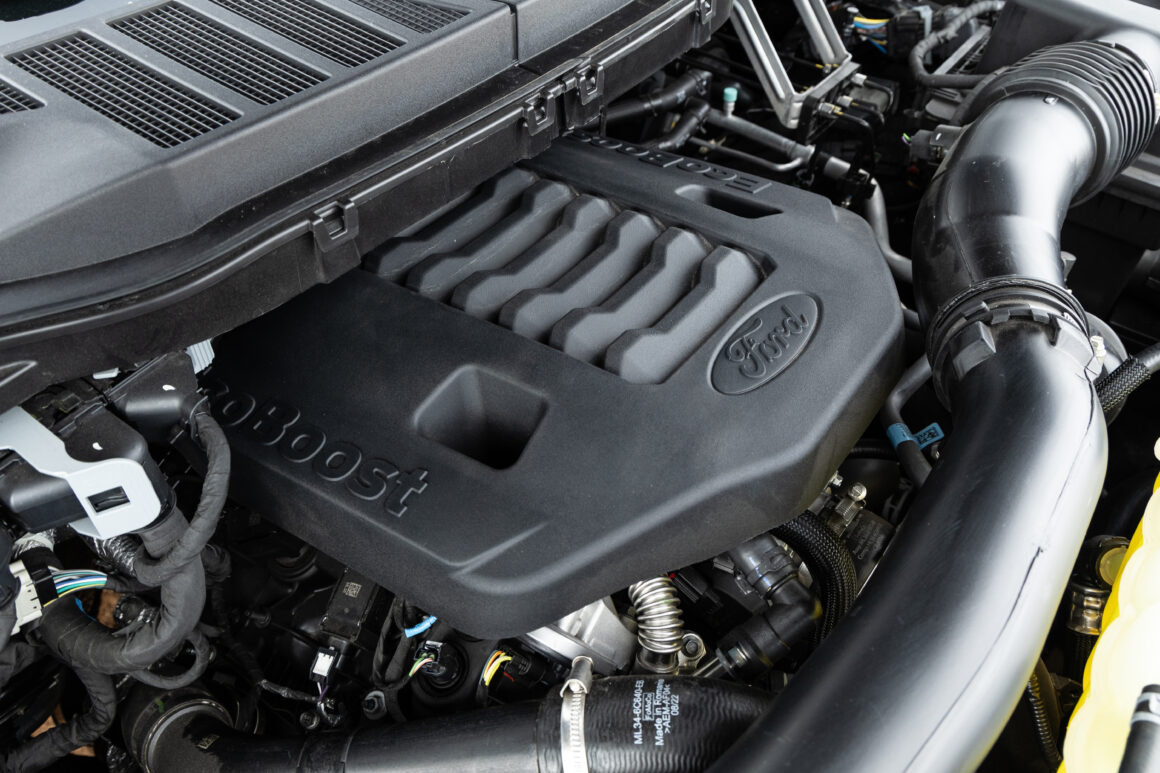
INTERIOR
The Lariat interior is, well, delightful. Everything about it is large. The big 12-inch touchscreen, the big centre console, the big 12-way adjustable seats. You feel like you could mow down 1000km a day in this rig without getting tired. And then you peer into the back seat. The legroom there could be best described as cinematic.
There are some brilliant features up front too, where the centre transmission shifter folds flat, allowing you to create a large centre table. Perfect for popping a laptop to do some work, or laying out a fast food feast.
The Lariat is obviously the pick of the interiors, with its leather seats and giant screen. But you’ll save a bucket of cash if you opt for the XLT model. Your first response though, is $117K and no leather? But then, when you start comparing it to things like 79 Series and RAMs, the value looks solid. The XLT’s centre screen is small, but probably looks even smaller given the acres of dashboard in front of you. Yet the driveability of the XLT is every bit as good as the Lariat.

TOW PRO
The F-150 has a 4.5-tonne towing capacity in Australia, eclipsing the mid-sized utes by a full tonne.
All of the F150 models in Australia come with a Ford Australia-engineered and tested 4.5-tonne tow hitch, complete with a 70mm tow ball. Heavy loads do result in a little bit of tail sag, but nowhere near as much as say, a RAM 1500. If you are going to tow a lot, you might still want to consider some heavier leaf springs.
Not only do all models come with a factory-fitted electronic brake controller, they also feature multiple rear camera views, a trailer light check system and even a trailer theft alert system. So with that last feature, if someone so much as unplugs your trailer plug, it sets off an alarm in the car and sends a message to your phone.
But the big party trick is called ‘Pro Trailer Backup Assist’. Rather than hauling on the steering wheel, there’s a dial on the dash that automatically spins the steering wheel (and does it much faster than you ever could!). That, coupled with a superb camera system, makes for really easy reversing with a trailer. Experienced towing folk might find it hard to get used to because it works against what you’ve learned. However, after a few goes you’ll get used to it. This is a great feature for those who are not confident in reversing a trailer. You can really just look at the screen, tweak the dial, and you’re there. Of course, there are no cameras mounted off the back of the trailer, so you still need to be aware of your surroundings, and not get too overconfident.

OFF-ROAD
It’s clear from the statistics of ramp over and approach angles that the F-150 isn’t destined to be a rock crawler. That’s reserved for Raptor spec. And the sheer dimensions and wheelbase are something that will make the vehicle less capable off-road than say, a Ranger. But that’s not to say it’ll be a slouch. With a solid traction control system and a rear differential lock as standard, you’ll be able to go a long way. You just might scrape the belly or the nose on occasion.
There looks to be room in the guards to fit some larger tyres though, and with taller rubber and a suspension lift, you’re back in the game. Add some decent fuel efficiency into the mix and a 136-litre fuel tank, and you’ve got yourself a tourer. Where I see this vehicle really shining, is on the beaches and deserts of Australia, where there’s plenty of space and room so you won’t scrape the sides or underbody. Our drive program didn’t involve anything more than a few dirt roads, so we’ll report on the 4X4 capability some more in a future road test.
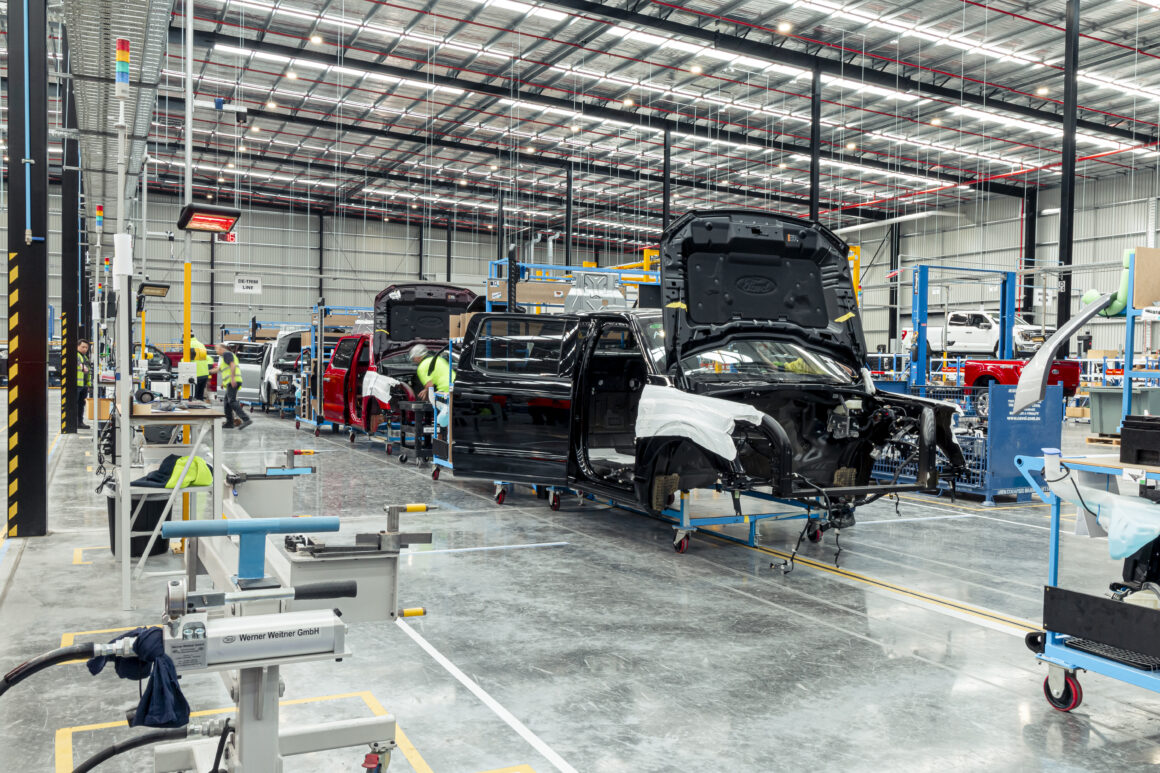
QUALITY PLAY
The effort to get a vehicle like this to the Australian market is immense. While you might think that it’s a simple case of a steering wheel swap and dashboard reboot, it’s so much more than that. More than 500 parts needed to be manufactured to suit the right-hand drive version. The aim was to replicate the American version in every way – quality, driveability – the works. However, in some respects, our model is better. For example, our XLT model benefits from 12-way adjustable seats, while the American model is four-way adjustable. One of the big areas where these right-hand drive conversions often fall down is in the electrics. So Ford’s manufacturing partner RMA in Melbourne opted to tear out all of the old wiring loom and replace it with a brand new one. No cutting and splicing here folks.
Yet there are other significant parts as well, including new tail lights, instrument panel, and magnesium cast cross member. Some parts, like the headlights were reused and modified to Australian spec, but others simply couldn’t be used again.
The manufacturing facility at RMA is first-class. Interestingly, the vehicles arrive from Detroit fully assembled. Even though there’s no need for many parts to be used, to interrupt the US production line and heavily modify the vehicles over there, just isn’t possible. But the U.S production bosses have toured the Aussie facility and were impressed with what they saw and indicated that this could pave the way for other RHD facilities around the world.
FINAL THOUGHTS
Vehicles like the Everest & Ranger are ripe for modification. Four-wheel drivers love bolting on all and sundry mods, and the vehicles seem to love it. But with the F-150, it has me thinking. Sure, you’ve got a lot of real estate to play with, so as four-wheel drivers, we have the licence to go nuts. But I, for one, and gonna be milder with my mods on my F-Truck. Why? Well, given Ford has tried so hard to reduce weight, and it has paid off handsomely when it comes to vehicle dynamics. If you go and max out the vehicle with every accessory known to mankind, you may risk killing the goose that laid the golden egg.
Sure, the engine will have no trouble keeping up, but over tyre, or over weigh the vehicle, and you could lose the sharpness and the performance that makes this vehicle sing. Yes, I’ll be modifying mine when it lands, but in a milder way than first thought. I’ll keep you posted with what I’m up to.
Oh, and if you want to get your hands on a Ford Australia F-150, you’ll have to put your order in soon. There’s a 5 to 6-month wait at present.
Build and price an F-150 yourself Read more – the unwritten rules every 4x4er should know



